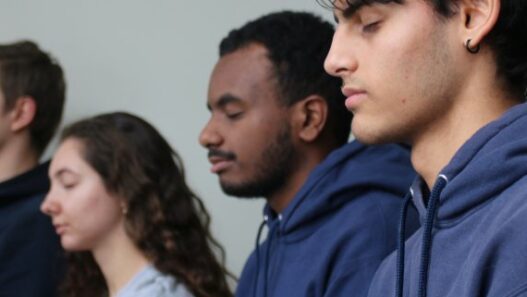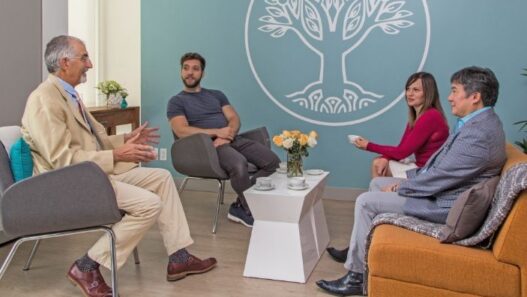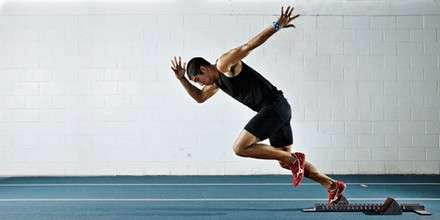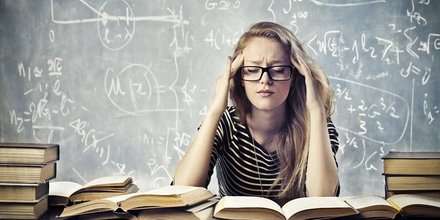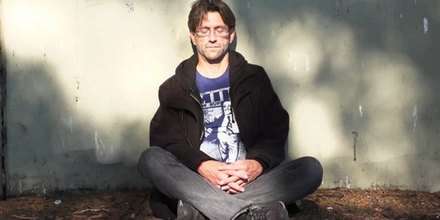Could one become a better athlete by simply sitting on one’s bum, closing one’s eyes and then … doing nothing?
Though it may sound outrageous, it is definitely possible! Here’s what science has to say about mental imaging, meditation practice, and sports performance.

What you imagine will become real
In one experiment, a group of trampolinists alternated physical practice of a specific skill with mental practice of the same sequence of movements. A control group worked on the same move for just as long but replaced the imaginary practice with performance of a non-related mental task.
The athletes in the first group improved their performance significantly more compared to those in the second.[i] So, while your body needs to rest, you can work on perfecting your moves from within!
What’s more, a second research project involving golfers showed that imaginary training sessions for specific skills led to more realistic self-expectation and better adherence to training programs.[ii]
Mentally training physical muscles
A study published in the journal Neuropsychologia compared the changes in muscle strength among individuals who were (a) physically training a specific muscle, (b) mentally “training” the same muscle, or (c) doing neither the real nor the imagined workout.
After 12 weeks, the muscle strength of people who had actually broken a sweat had increased by 53%. Those in the third group who had done nothing had gained no additional strength. However, individuals who had merely imagined working out had increased their muscle strength by sheer will-power by 13.5%.[iii]
So when you are too tired to work out for real, doing it in your head does indeed provide tangible results.
Faster, higher, stronger while sitting still
A boost to athletic performance can also be accomplished through the rest provided by meditation.
A study of world-class athletes’ brain activity patterns and other mental characteristics revealed that much of the athletes’ success can be attributed to high levels of brain integration, self- and moral development, and the ability to have peak experiences.
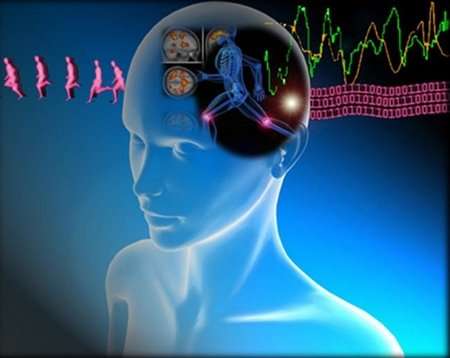 Research also indicates that Transcendental Meditation might be the key to unlocking that potential in every individual, since TM practice leads to higher brain integration, more emotional stability and decreased anxiety during the performance of challenging tasks.[iv]
Research also indicates that Transcendental Meditation might be the key to unlocking that potential in every individual, since TM practice leads to higher brain integration, more emotional stability and decreased anxiety during the performance of challenging tasks.[iv]
Perhaps the high school stereotype of dividing kids up into “jocks” and “nerds” no longer holds. It turns out that the grey matter can give one quite an edge on the sports field!
SPORTS AND MEDITATION:
PERSONAL PROFILES
- Baseball: Champ Barry Zito’s ‘bubble of serenity’
- Judo and jiu jitsu: Flavio Canto, Olympic medalist who has a black belt in life
- Football: Ruben Sanchez, Spanish football player with a new goal
- Basketball: John Fultz talks about shooting hoops, addiction, and … meditation
- Sports management: Added calm benefits football manager Sam Allardyce in the Premier League
SPORTS AND MEDITATION:
ACADEMIC RESEARCH PAPERS
- Feltz, D.L., & Landers, D.M. (1983). “The Effects of Mental Practice on Motor Skill Learning and Performance: A Meta-analysis.” Journal of Sport Psychology, 5, 25-57.
- Fisher, C. (2012). “High Brain Integration Underlies Winning Performances of World Class Athletes”. BMED Report. http://www.bmedreport.com/archives/32699 [iv]
- Isaac, A. (1997). “Mental Practice – Does it Work in the Field?” The Sport Psychologist, 6, 192-198. [i]
- Li-Wei, A., et al. (1992). “The Effect of Mental-Imagery Training on Performance Enhancement With 7-10-Year-Old Children.” The Sports Psychologist, 6, 230-241.
- Martin, K.A., Hall, C. R. (1995). “Using Mental Imagery to Enhance Intrinsic Motivation.” Journal of Sport and Exercise Psychology, 17(1), 54-69. [ii]
- Murphy, S. (1990). “Models of Imagery in Sport Psychology: A Review.” Journal of Mental Imagery, 14 (3&4), 153-172.
- Paivio, A. (1985). “Cognitive and Motivational Functions of Imagery in Human Performance.” Journal of Applied Sports Science, 10, 22-28.
- Porter, K., Foster, J. (2004). Visual Athletics. 1990. Dubuque, Iowa: Wm. C. Brown Publishers.
- Ranganathan, V.K., et al. (2004) “From mental power to muscle power—gaining strength by using the mind”. Neuropsychologia, 42 (2), 944–956. [iii]
- Roure, R., et al. (1998). “Autonomic Nervous System Responses Correlate with Mental Rehearsal in Volleyball Training.” 1998. Journal of Applied Physiology, 78(2), 99-108.
- Suinn, R. (1990). Psychological Techniques for Individual Performance. New York, New York: Macmillan. Pages 492-506.


